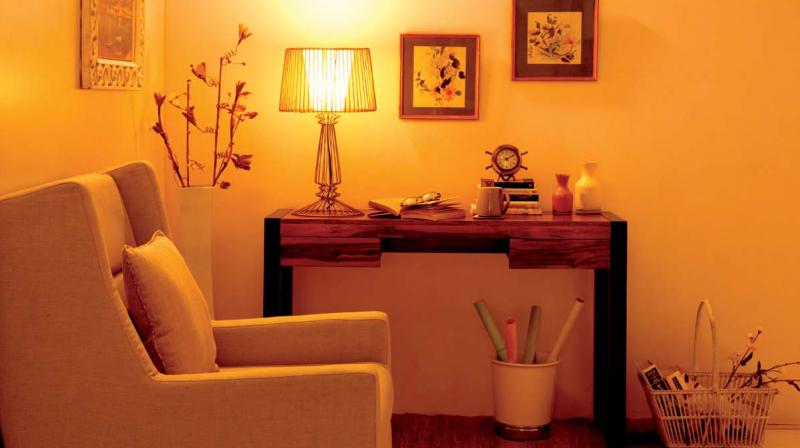Light years ahead in ambience
The lighting in your home can go a long way in defining spaces and moods!

A well-lit home is a thing of beauty. Light is the source of life, giving us needed energy and uplifting our spirits. Lighting is usually the most overlooked and yet the most important elements of good interior design.
After all, there is little point in creating stunning surroundings if they cannot be appreciated properly. Good lighting is when there is the perfect balance of being functional and feel-good, and doesn’t draw too much attention to itself.
Many homes are gloomy simply because they don’t have enough lighting fixtures. Getting the lighting right for any room is quite a technical process. But once you arrive at that sweet spot, the perfect combination of artificial and natural lighting, it will all be worth the effort. Here are the main ingredients to think about when giving your living space a light makeover.
Match your lights with your furniture
Match your lighting with your furniture’s style. If you like classic, traditional décor, look for old-fashioned chandeliers or lamps designed in a simple, “reduced” way.
Recessed lights are good for all types of apartments — minimalistic and fancy, vintage and cosy. Modern furniture goes well with elaborate, ornate lamps and wall sconces.
Light unexpected places
Lighting functions as art that helps define your style, set the mood and most importantly perform practical tasks. Consider adding light in unexpected places, use pendant lights as reading lamps, LED lighting in kitchen cabinets, display paintings, accentuate plants. Although, the angle of the lighting clearly needs to be just right to achieve the very best effect.
In the living room, place reading lamps next to a couch or chair for you to curl up with your favourite book. Floor lamps can brighten under-lit portions of the house.
To create a statement piece, add a chandelier or a cluster of pendant lights. Tone down the lighting for a bedroom. Lower wattage bulbs evoke a warm, soft glow environment.
Table or wall lamps on either side of the bed work perfectly for reading and working on your laptop. A wall lamp or sconce can be used.
For your dining spaces, modern chandeliers or pendant lights work the best. Dress up your walls with accent lights (like sconces) or use a floor lamp to spruce up the ambience.
Think layers, not wattage
A novice mistake we make with lights: Assuming that a room needs to be lit evenly, and that one source is adequate. The truth is that good lighting is layered, and comes from multiple sources. The art of layering involves mixing various types of light.
Use the rule of three
There are three basic lights, combine them in degrees for best results:
Ambient light is general, background illumination that floods the entire room.
This includes overhead lighting like pendant lamps, built-in ceiling lights and floor lamps. But this light can look flat and undefined
Augment ambient lighting with task lights like wall and table lamps. They help you get work done by throwing a concentrated and focused pool of light on key areas.
Accent lights add texture and mood. They create zones of visual interest by spotlighting art, bookshelves or plants.
Dimmers are perfect multitaskers.
Think of lighting like a radio. You don’t want to have just one volume. Lighting should have the opportunity to be ambient lighting and task lighting.
Dimmers have multitasking abilities. Good lighting should multitask and set the mood. To make the most of your lighting, install the highest-wattage lightbulb possible, then dim it down to accommodate the mood and lighting needs. Consider putting dimmers on lighting.
Don’t be afraid when choosing lighting for your home, it can help your ambiance and mood in the space. Just like the colour of your rooms, lighting should enhance your space and make it feel warm and inviting!
— The writer is the design head (interiors), Urban Ladder

